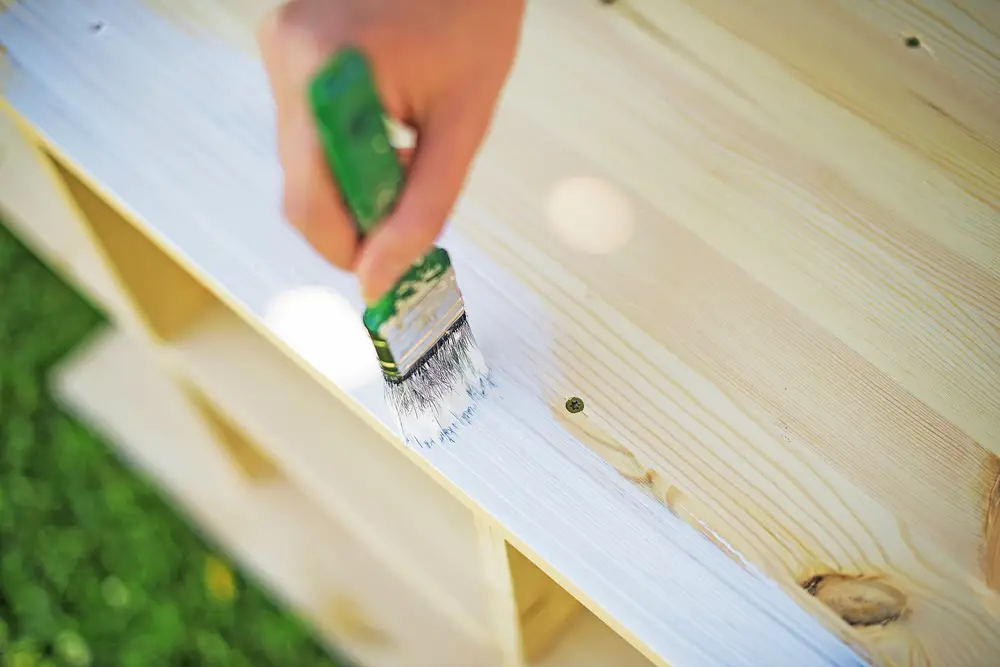
When it comes to DIY painting projects, achieving a smooth and even paint application is essential for a flawless finish. It’s not just about the colour you choose; the quality of the finish plays a significant role too. To ensure professional-looking results, here are some tips and techniques for achieving a smooth and even paint application.
Key Takeaways
- Choosing high-quality paint from reputable brands ensures a smooth finish.
- Understanding the characteristics of different paint types, such as latex and oil-based, helps in selecting the right one for your project.
- Selecting the appropriate tools, such as paint brushes, rollers, or sprayers, is crucial for achieving a smooth application.
- Mastering the techniques for brushing, rolling, and spray painting is important for a professional-looking finish.
- By following these tips and techniques, you can achieve a smooth and even paint application, resulting in flawless DIY painting projects.
Choosing the Right Paint for a Smooth Finish
When it comes to achieving a smooth and even paint application, choosing the right paint is a crucial first step. Opting for high-quality paint from reputable brands known for their premium products can make all the difference in achieving a flawless finish. Not only does high-quality paint enhance the visual appeal of your project, it also ensures durability and longevity, giving you a paint job that will stand the test of time.
Consider the specific needs of your project when selecting the paint. Factors such as the type of surface and the desired sheen can influence your decision. Whether you’re painting walls, furniture, or other surfaces, taking the time to choose the right paint will pay off in the end.
Benefits of Choosing High-Quality Paint from Reputable Brands
- Enhances visual appeal
- Ensures durability and longevity
- Provides a smooth finish
By selecting a high-quality paint from a reputable brand, you can have confidence in the product’s performance and the final result of your painting project. Look for well-known brands that have a track record of delivering exceptional paint products.
Understanding the Different Paint Types and Their Characteristics
When it comes to achieving a smooth and even paint application, it’s important to understand the characteristics of different paint types. This knowledge will help you make an informed decision and ensure the best results for your DIY project.
Latex Paint: Water-Based and Easy Cleanup
One popular type of paint is latex paint, which is water-based and offers easy cleanup. Latex paints are suitable for most DIY projects due to their versatility and easy application. The water base makes them quick-drying, reducing the waiting time between coats. Additionally, latex paints are available in a wide range of colours and finishes, allowing you to achieve the desired look for your project.
Oil-Based Paint: Durable Finish with Longer Drying Time
On the other hand, oil-based paints provide a more durable finish and are known for their longevity. These paints create a solid and resistant barrier on the surface, making them ideal for high-traffic areas or surfaces that require extra protection. However, oil-based paints typically have a longer drying time and can emit strong odours during application. It’s important to consider these factors and plan accordingly when choosing oil-based paint for your project.
When deciding between latex and oil-based paints, consider the specific needs of your painting project. If easy cleanup and quick drying time are key priorities, latex paint is the preferred choice. However, if durability and a strong protective finish are essential, oil-based paint may be more suitable.
| Paint Type | Characteristics |
|---|---|
| Latex Paint | Water-based Easy cleanup Quick drying Wide range of colours and finishes |
| Oil-Based Paint | Durable finish Longer drying time Strong protective barrier |
Selecting the Appropriate Tools and Techniques
When it comes to achieving a smooth and even paint application, selecting the right tools and using the correct techniques is key. Each tool has its own purpose and can greatly impact the outcome of your painting project. Whether you prefer brushes, rollers, or sprayers, understanding when and how to use them effectively can make a significant difference in the final result.

Brushes: Perfect for Detail Work
When it comes to intricate areas or detailed work, paintbrushes are your best friend. They provide precision and control, allowing you to easily navigate corners, edges, and smaller surfaces. Whether you’re painting trim, window frames, or furniture, using a high-quality paintbrush will ensure a clean and professional finish. Remember to choose brushes with the appropriate bristle type and size for your specific project.
Rollers: Ideal for Efficiently Covering Large Areas
If you’re tackling larger surfaces like walls or ceilings, rollers are the go-to tool for efficient coverage. They allow you to apply paint quickly and evenly, saving you time and effort. When using a roller, it’s important to choose the right nap length for your surface. A longer nap is suitable for textured surfaces, while a shorter nap works well on smoother walls. Additionally, using a roller extension pole can help you reach higher areas without straining yourself.
Sprayers: Professional Finish with Even Coats
If you’re looking for a truly professional finish, consider using sprayers. They ensure an even distribution of paint, resulting in a flawless surface. Sprayers are highly efficient for covering large areas or intricate surfaces with complex shapes. However, sprayers require proper technique and control to avoid overspray. It’s important to practice beforehand and ensure you have the necessary protective measures in place, such as masking off areas not intended for painting.
Mastering the techniques for brushing, rolling, and spray painting is crucial for achieving a smooth and flawless finish. Experiment with different techniques, practice on sample boards, and gain confidence in your abilities. With the right tools and techniques, you’ll be able to tackle any painting project with ease and achieve professional-quality results.
| Tool | Best Use | Advantages |
|---|---|---|
| Paint Brushes | Detail work, corners, edges, smaller surfaces | Precision, control, clean finish |
| Rollers | Larger surfaces like walls or ceilings | Efficient coverage, saves time |
| Sprayers | Large areas, intricate surfaces with complex shapes | Professional finish, even distribution |

Conclusion
Achieving a smooth and flawless finish is essential for any DIY painting project. By following professional paint application tips, you can ensure that your paint application is smooth, even, and professional-looking.
Start by choosing the right paint for your project. Opt for high-quality paints from reputable brands that are known for their excellent finishes. This will help you achieve a flawless finish that will last.
Understanding the different paint types and their characteristics is also crucial. Consider whether latex or oil-based paints are more suitable for your project. Latex paints offer easy cleanup and are perfect for most projects, while oil-based paints provide a more durable finish.
Lastly, selecting the appropriate tools and mastering the techniques is essential for achieving a smooth paint application. Use high-quality brushes, rollers, or sprayers depending on your project’s needs. Develop your skills in brushing, rolling, and spray painting techniques to ensure a flawless finish.
FAQ
What is the key to achieving a smooth and even paint application?
The key to achieving a smooth and even paint application is choosing the right paint, understanding the different types of paint and their characteristics, selecting the appropriate tools, and mastering the techniques for brushing, rolling, and spraying.
How do I choose the right paint for a smooth finish?
To choose the right paint for a smooth finish, opt for high-quality paint from reputable brands known for their premium products. Consider the specific needs of your project, such as the type of surface and the desired sheen, when selecting the paint.
What are the different types of paint and their characteristics?
There are two main types of paint: latex and oil-based. Latex paints are water-based and offer easy cleanup, making them ideal for most DIY projects. Oil-based paints provide a more durable finish but require more time to dry. Consider the specific needs of your project, such as the surface and the desired finish, when deciding between latex and oil-based paints.
What tools should I use for achieving a smooth paint application?
The key tools for achieving a smooth paint application are brushes, rollers, and sprayers. Brushes are perfect for detail work, rollers are ideal for covering large areas efficiently, and sprayers provide a professional finish with even coats.
What techniques should I use for achieving a smooth paint application?
To achieve a smooth paint application, you need to master the techniques for brushing, rolling, and spray painting. Brushing is perfect for detail work and requires steady strokes, rolling is ideal for covering large areas efficiently with even pressure, and spray painting provides a professional finish with even coats.
How can I ensure a flawless finish for my painting projects?
You can ensure a flawless finish for your painting projects by following these tips and techniques: choose the right paint, understand the different paint types, select the appropriate tools and techniques, and master the brushing, rolling, and spray painting techniques. With the right approach, you can achieve professional-quality results and have a smooth and even paint application.
- Drill Battery Maintenance: Essential Tips for Cordless Drill Battery Care - February 5, 2024
- Troubleshooting Drill Issues - February 5, 2024
- Quick Drilling Techniques - February 2, 2024









